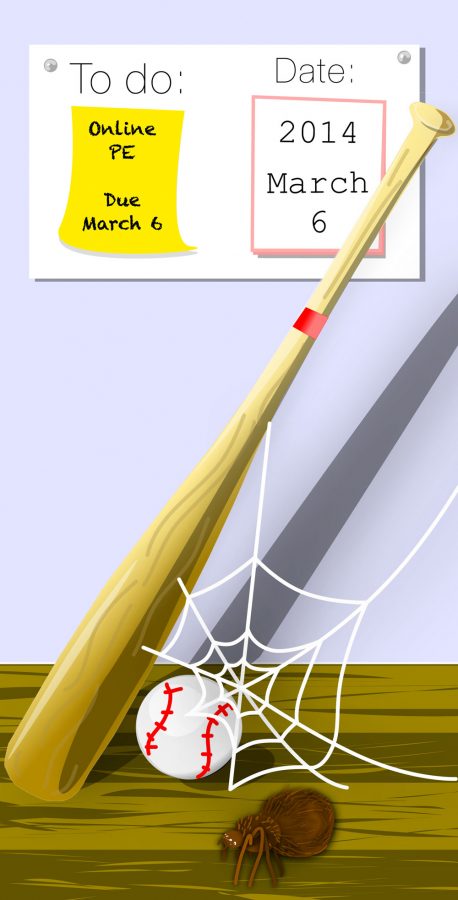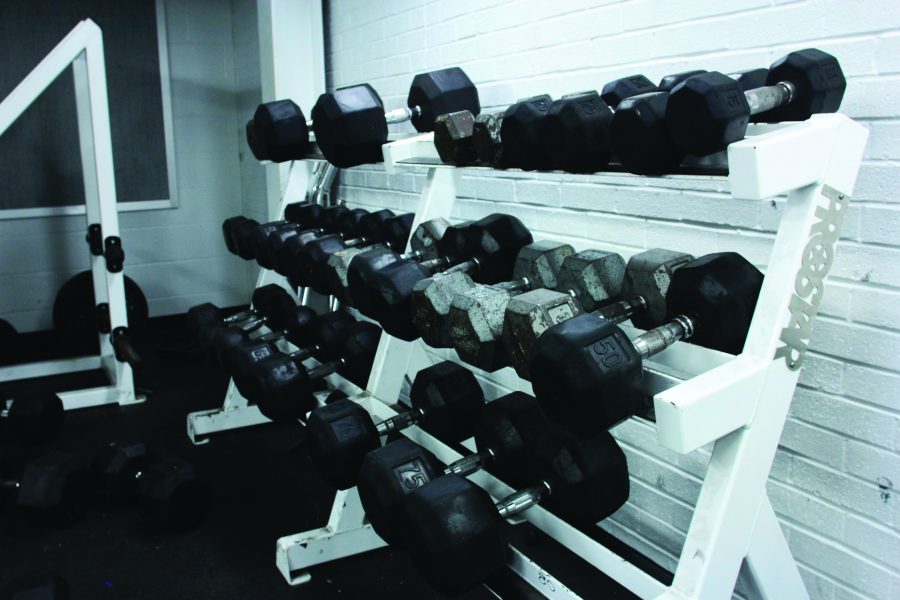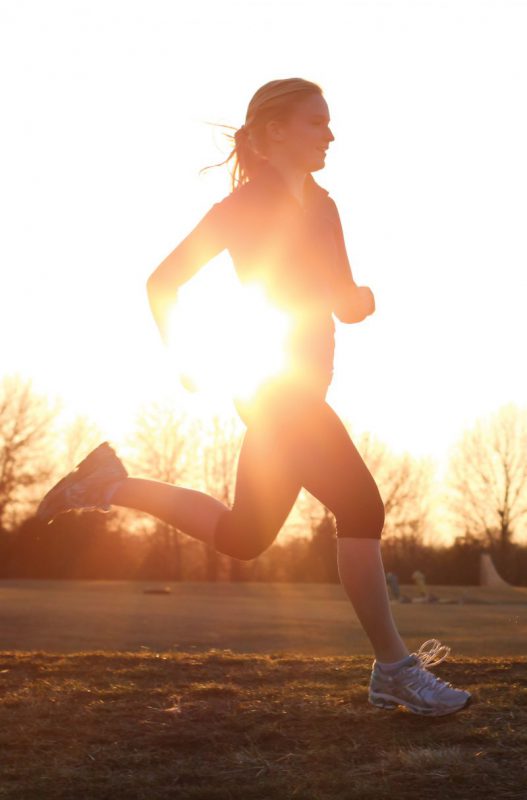
With the determination to exert herself to her utmost physical ability, junior Anah Habib frequently hits the gym, performing fitness tasks including but not limited to weight lifting. Habib’s dedication is focused primarily on achieving a more active, exercised body in the hopes of a leading a healthier lifestyle.
Habib enrolled in an online physical education course through Columbia Public Schools, which the district introduced in the second semester of last school year.
Since the class is primarily online, Habib said if a student is not active on a daily basis, she can definitely see how slacking off could occur easily. However, Habib mentions said fitness logs are required for the course provide a decent tracking system for students to record and attain a healthy lifestyle by means of tracking physical progress and setting new goals.
“I think a major advantage of having the class online, for me, has been the ability to physically manage my progress,” Habib said. “[The fitness logs] make me aware of how often I do a certain type of exercise, or it makes me feel bad when I see that maybe I haven’t worked out for a long time, since the class requires at least three hours of exercise a week.”
However, online P.E instructor Christi Hopper said the honor system and lack of face-to-face interaction the class operates on isn’t necessarily the most effective way to track a student’s physical progress.
“The disadvantage is that students lose out on some of the important aspects of P.E. such as teamwork, game strategies, and individualized instruction from a teacher,” Hopper said. “It is difficult to correct form for a specific activity if you don’t see it. Also, there is no real accountability for the fitness logs.”
Hopper, who is the district curriculum coordinator for secondary health and physical education, taught a variety of physical education courses both online and face-to-face in the CPS district for 22 years, ranging from swimming at Hickman High School, general P.E. courses, a tumbling course and Health classes. Last school year, after its introduction, Hopper’s online P.E. course had only two students.
This year, 17 students were enrolled first semester; currently, there are two sections of the class with around 20 students in each. Hopper credits this increasing popularity of online P.E. to the need for ‘wiggle room’ in a busy student’s schedule.
“Online P.E. helps students who are involved in many other things,” Hopper said. “It gives students the opportunity to work out when it is best for them. It also covers some topics not covered in a traditional P.E. class. Also, many colleges now offer online courses, and this experience will help students in their future.”
And Hopper’s projections look promising as a recent study from www.usnews.com states that the number of college students enrolled in at least one online course increased for the ninth straight year, according to a Babson Survey Research Group of more than 2,500 colleges and universities. The study reports that more than 6.1 million students took at least one online class in the fall – a 10.1 percent increase over the year before.
However, junior Humera Lodhi, who is also enrolled in the CPS online P.E. course, doesn’t necessarily believe online P.E. is for everyone. Lodhi said that the lack of direct monitoring of physical progress doesn’t allow the online version of the course to be at the level of a traditional physical education class.
“I honestly don’t believe that online P.E. is as rigorous as a regular P.E. class. In online P.E., the online assignments are very similar to the requirements for a health and nutrition class,” Lodhi said, “and while there are exercise requirements each week, meaning that students have to do some physical activity, I don’t think it adds up to the a traditional, in-school P.E. class. However, we do have to meet the health standards for various exercises such as the mile run, the sit-up test and the pull-up test, so I don’t think the curriculum is necessarily sub-par.”
And Lodhi isn’t alone in her dissatisfaction for the online course. Hopper said she doesn’t believe the course gives students an accurate reflection of their physical progress, so she is working to bring a better version of the online P.E. class to CPS.
“I am not completely satisfied with the online P.E. program we are currently using,” Hopper said. “A former colleague has developed a course for her school district in Springfield, Mo. I am currently working with that district to review and possibly purchase their course. Their course includes heart rate monitors that will be downloaded weekly. [Currently], I do think that the curriculum helps students look at different types of physical activity, but I would like it to do more and include more focus on lifetime fitness.”
Until the new course makes its way to the CPS district, Hopper advises students who plan to take, or are currently taking online P.E. to stay on track of their work and not to put off the assignments and fitness. Hopper emphasizes the importance of scheduling time into every week for the course. Following Hopper’s advice, Habib personally recommends online P.E. only to those who believe they can stay on top of the course consistently.
“I would only recommend online P.E. to someone who is not only motivated enough to actually do the tracking and paperwork, but also someone who can take advantage of the ‘free’ block that it gives in your schedule,” Habib said. “In other words, if you know you’re going to slack off and do the work at the last minute, it’s probably just easier to take a semester of fitness walking or strength training.”
Regardless of the venue, Lodhi said whether a student takes an online or brick-and-mortar P.E. class, the physical success obtained truly depends on the students themselves.
“I honestly think that P.E. in a traditional, in-school setting doesn’t necessarily make the student any more or less healthy. But by having an online P.E. option, I think that there will be some people who will take it as the idea that physical activity isn’t important and necessary for a healthy life,” Lodhi said. “But, there will always be students who properly utilize the class and will take online P.E. as a self-directed source of motivation to lead a longer-lasting healthy life.”
By Manal Salim




























































































Riley Martin • Apr 10, 2014 at 5:43 pm
I think online PE courses were a great idea. Everyone has their own ways of exercise. The actual class curriculum is outdated and useless really. It’s a waste of time for those who are already involved in a sport or activity.